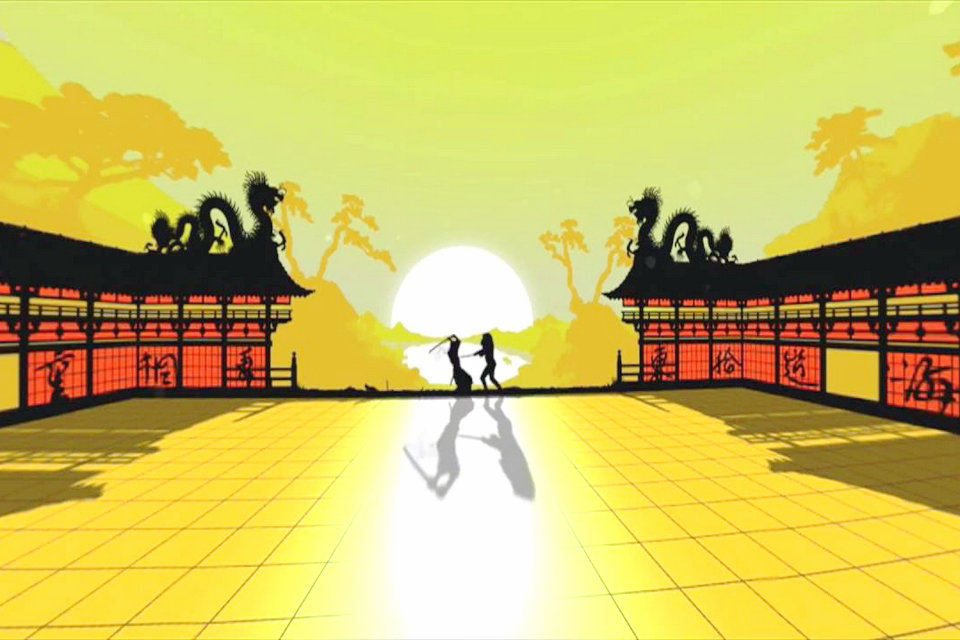A VR journey into the history of cinema, 360° Video, Kinoscope


Have you ever dreamed of traveling to the cinema? To immerse yourself for a moment in the world of masterpieces of the 7th art? Thanks to virtual reality, Kinoscope invites you to live this journey.
Kinoscope is a 360 VR experience immersing you into a lively and colorful universe to discover the history of cinema. Told from the early beginnings throughout the 20th century, and featuring animations of some of movie history’s biggest moments, you will love reliving how film evolved throughout the years.
The video is narrated by the voice of the Hollywood legend Dean Tavoularis, a motion picture production designer whose work appeared in numerous box office hits such as The Godfather films, Apocalypse Now, The Brink’s Job, One from the Heart and Bonnie and Clyde.
Kinoscope will be part of the exhibition « The Cinema Machine: from Méliès to 3D » and showcased at the Cinémathèque Française in Paris.
History of film
Although the start of the history of film is not clearly defined, the commercial, public screening of ten of Lumière brothers’ short films in Paris on 28 December 1895 can be regarded as the breakthrough of projected cinematographic motion pictures. There had been earlier cinematographic results and screenings but these lacked either the quality or the momentum that propelled the cinématographe Lumière into a worldwide success.
Soon film production companies and studios were established all over the world. The first decade of motion picture saw film moving from a novelty to an established mass entertainment industry.
The earliest films were in black and white, under a minute long, without recorded sound and consisted of a single shot from a steady camera.
Conventions towards a general cinematic language developed over the years with the use of several shots (mostly through editing), continuity between shots, camera movements (panning, tracking, tilt), camera angle, field size (long shot to extreme close-up) and other cinematic techniques all contributing specific roles in the narrative of films.
Special effects became a feature in movies since the late 1890s, popularized by Georges Méliès’ fantasy films. Many effects were impossible or impractical to perform in theater plays and thus added more magic to the experience of movies.
Technical improvements added length (reaching 60 minutes for a feature film in 1906), synchronized sound recording (mainstream since the end of the 1920s), color (mainstream since the 1930s) and 3D (mainstream in theaters since the first decade of the 21st century). Sound ended the necessity of interruptions of title cards, revolutionized the narrative possibilities for filmmakers, and became an integral part of moviemaking.
Different film genres emerged and enjoyed variable degrees of success over time, with huge differences between for instance horror films (mainstream since the 1890s), newsreels (prevalent in U.S. cinemas between the 1910s and the late 1960s), musicals (mainstream since the late 1920s) and pornographic films (experiencing a Golden Age during the 1970s).
The popularity of television seemed to form a threat to cinemas in the 1950s (at least in the U.S. and other western countries), which resulted in attempts to make theatrical films more attractive with technological innovations. New widescreen formats enticed filmmakers to create more epic films and spectacles that looked better on a big screen than on television. 3D films experienced a short golden age from 1952 to 1954. Television also opened up a new market for filmmakers, introducing new possibilities that led to new genres, especially in serialized form.
Since the 1950s video became a viable, cheaper alternative to film, with direct results, forming a more accessible moving image medium for many more artists and amateurs to experiment with. This led to the emergence of video art in the late 1960s and to much more home movies being made.
By the 1980s home video had opened a big market for films that already had their theatrical run, giving people easier access to titles of their choice in video rental shops. Direct-to-video (niche) markets usually offered lower quality, cheap productions that were not deemed very suitable for the general audiences of television and theatrical releases.
Improving over time, digital production methods became more and more popular during the 1990s, resulting in increasingly realistic visual effects and popular feature-length computer animations.
Since the late 2000s streaming media platforms like YouTube provided means for anyone with access to internet and cameras (a standard feature of smartphones) to publish videos to the world. Also competing with the increasing popularity of video games and other forms of home entertainment, the industry once again started to make theatrical releases more attractive with new 3D technologies and epic (fantasy and superhero) films became a mainstay in cinemas.
Google Arts & Culture
Discover the inspirational moments, iconic people, and artistic wonders that are available at the tip of your fingers. Google Arts & Culture allows you to immerse yourself in culture with 360 views, zoom in to reveal the secrets of a masterpiece, take behind the scenes tours of palaces and museums, watch kids explain famous paintings to art experts, and so much more. Art changes the way we see the world and the way we see each other, so we invite you to come and expand your horizons with us.
The French Cinematheque
The Cinémathèque Française is a French non-profit film organization founded in 1936 that holds one of the largest archives of film documents and film-related objects in the world. Based in Paris, the archive offers daily screenings of worldwide films.